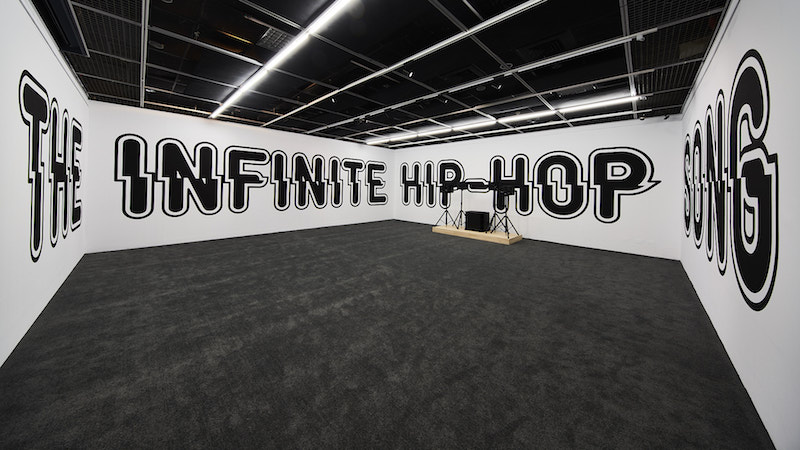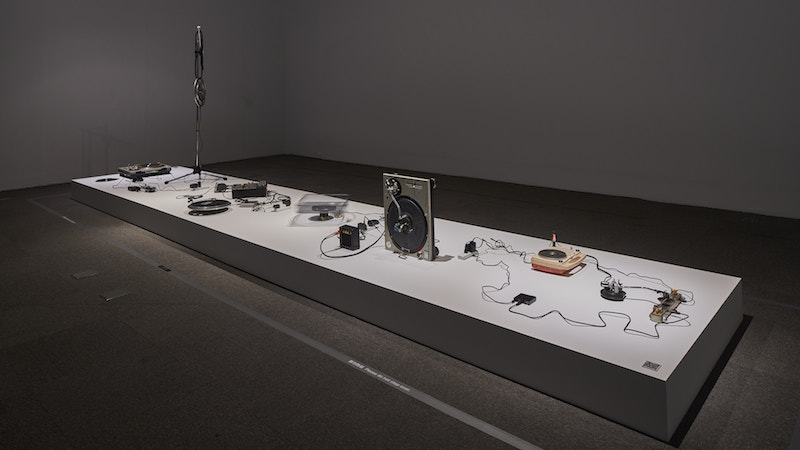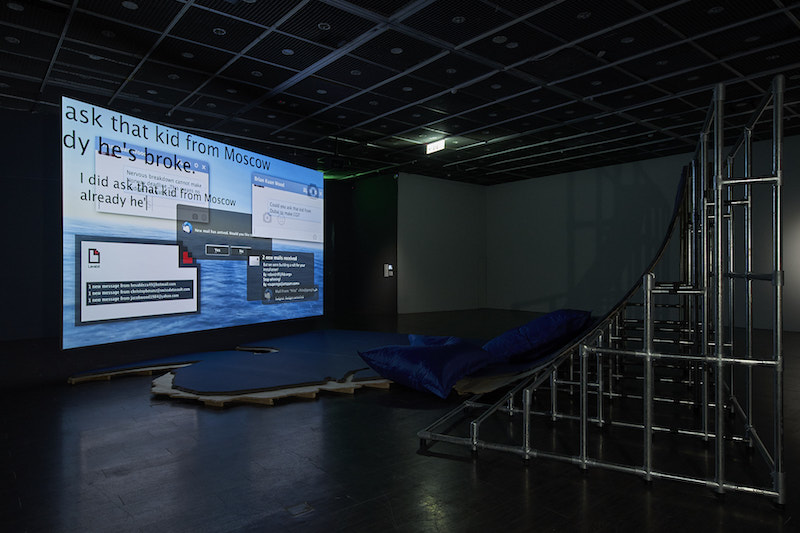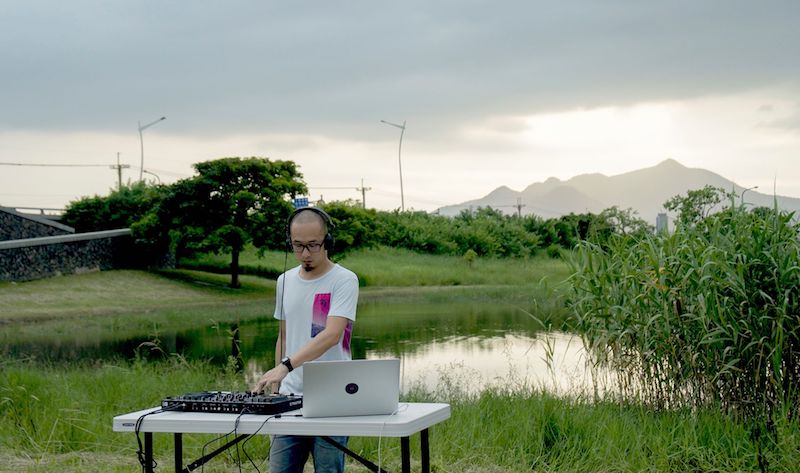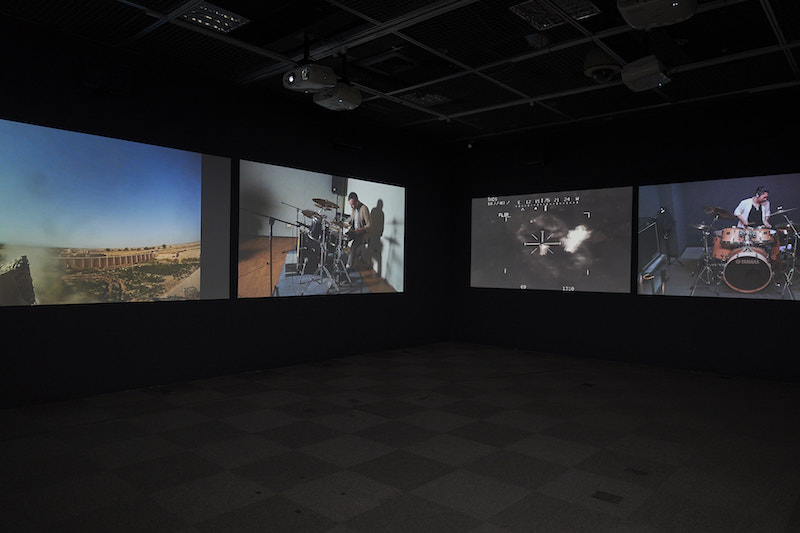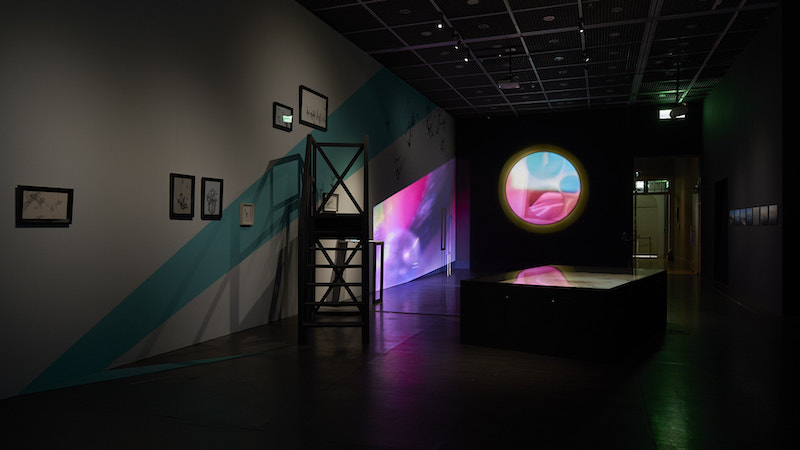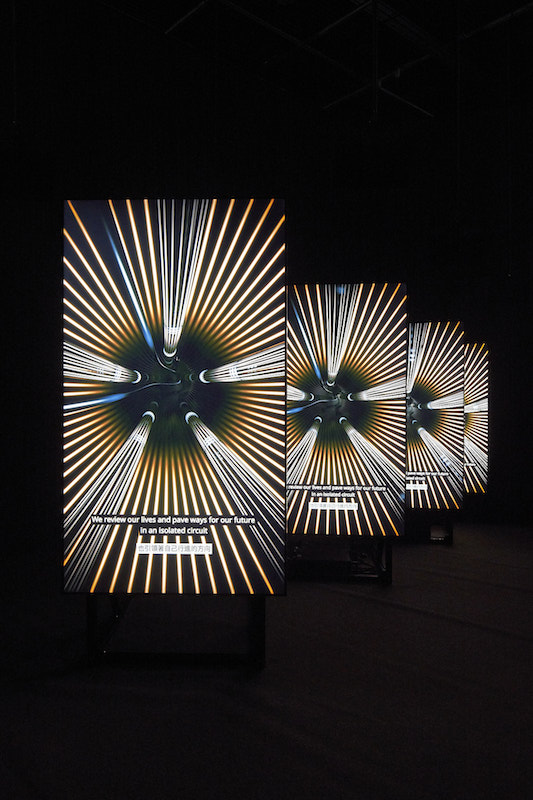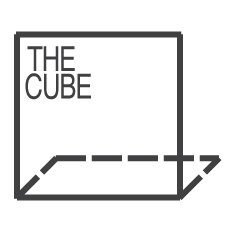
Liquid Love
Love in the Clouds: Welcome to the Liquid Modern World!
Amy Cheng (Curator)

Dear visitors, welcome to the “liquid
modern world!”
- Liquid Love, the title of this exhibition, owes its inspiration to the book by Polish sociologist Zygmunt Bauman, Liquid Love: On the Frailty of Human Bonds (2003). This exhibition re-thinks and explores the experiences of contemporary life in network society through the lens of Bauman’s reflective thinking on the modern world.
- Bauman coined the term “liquid modernity” to characterize our life experiences, as they are shaped and dominated by the flow of financial capital and big data, accompanied by the artificial manipulations and ubiquitous algorithms, and the incorporation of state-of-the-art telecommunications technology today. These experiences and features were exactly what Bauman devoted a lifetime to analyzing.
- Just as Bauman argued, we are inhabitants of the liquid modern world in the information age. In this exhibition, we treat the creative thought and practice of art as an alternative and conceptual means for a new round of dialectical reflection on the world we live in.
- Citing the clues that 19th-century poet Charles Pierre Baudelaire left behind in Le Spleen de Paris, Bauman expounded his idea of non-linear liquid temporality at the outset of Liquid Love. Baudelaire wrote: “My dear friend, I send you a small work of which one could say, not unjustly, that it has neither head nor tail, since everything in it is on the contrary a head and a tail, alternatively and reciprocally. […] We may cut short […] because I do not hold the tiring will of any of them endlessly to a superfluous plot.”
- Similarly, this exhibition seeks to immerse the visitors in the reading and perceptual context of “multiple nodes” and “synchronicity,” thereby helping us reflect on today’s infoxication syndromes, yet allowing us to “envision” society from the perspective of the Baudelairean flâneurs.
- This exhibition encourages visitors to both bodily and consciously shuttle “inside” and “outside” of the time and space constructed by the works, which may prove an interesting way to grasp the concept of “liquid society.” In the 20th century, humanity witnessed the transition of society from the industrial to the post-industrial, in which the modern living experience was described as “solid”—moving from corporeality and material-based spatial transformation (e.g., from agricultural villages to urban cities) and the process of material production (humans on countless assembly lines) towards the “media revolution” of time, speed, transmission, and communication in the era of consumption and telecommunication.
- Confronted with the turbulence and changes in their quotidian relationships at the dawn of the industrial age, people tended to feel deeply uncertain about their individual and collective future. Cogitating the beginning of the industrial age, Karl Marx wrote the following words in 1848, now legendary: “All that is solid melts into air,” a sentence as thought-provoking as empirically imaginable when placed in today’s context.
- In the liquid society, people pursue velocity and variation, and emphasize mobility and lightness.
- Therefore, we are undergoing a revolution in the relationships between people, between human beings and objects, as well as between humanity and the world, through which we expect to transcend the confines of “fixed” relational ties and embrace an imaginary future as changing as expanding. Such a zeitgeist is not only altering people’s mind and conscious, but also drastically reshaping the politics of every society and social stratum.
- “The future is now” has become a reality.
- According to the results of searching for the phrase on the Google search engine, the phrase, “the future is now” originates from the title of a short documentary in 1955 which gave prominence to future-oriented, advanced products in U.S. government labs, such as the video telephone, home video recorder, electronic composing system, pocket radio, and wrist radio.
- Indeed, the future is now, and some scenarios of “future” have even become the past. We live in the future, or, to put it another way, our “present” is the “future” in the making.
- How did the interpersonal relationship between humans, as well as that between humanity and the world change? Bauman discussed the relationships “in the clouds” in Liquid Love: People have unquenchable thirst for close “connections” (social bond) on the one hand, and ask for the “freedom” to be detached anytime on the other. He invoked the metaphor of love to tackle the relationships and the collapse of traditional values in the age of information and consumption.
- In other words, as technological products such as electronic media, the Internet, and smartphones become part of the quotidian existence of half the global population in the contemporary world, we expect to be online anytime so that we can become connected with others in an easy, unhindered fashion, yet we also want to be capable of being offline and severing the social ties with others if necessary.
- The previous ideal of a relationship as strong as diamond has been liquefied today. “Be water, my friend,” Bruce Lee said in a TV interview in 1971. This quote embodied his spirit, and, more thought-provoking, it implied the “art of ‘being’” in contemporary liquid life.
- The question to be addressed in this exhibition: what counts as the “covenant relationship” in contemporary liquid life? The seven participating artists in this exhibition outline seven different scenarios for the visitors.
- Egyptian artist Hassan Khan’s work The Infinite Hip-Hop Song is an algorithmic product. Once the computer boots up, it produces an endless, non-repetitive stream of hip-hop songs. The artist derives the vocals from the pre-recorded tracks by many hip-hop singers. This automatic composing system bears more than a passing resemblance to an autopoietic “organism.”
- In his work Drinking from the Spring of Liquid Love, Japanese musician/artist dj sniff gathers songs whose titles and lyrics contain the term “liquid love” from a huge volume of online information. The length of the “collected data” is about half a day. The artist remixes these songs into a “new work,” and then plays it via the reconnection of a set of repurposed sound objects like turntable, cassette player, spring, and amplifier. After layers of deconstruction and reconstruction, these sounds become “sound signals” unintelligible to the visitors.
- German artist Hito Steyerl’s work Liquidity Inc. can be interpreted as a survival strategy for individuals in face of the unstable and uncertain future (e.g., financial and market fluctuations or economic recession) in the liquid world. Bearing the signature of Steyerl’s message-based image, the protagonist in this work is a financial analyst who has been unemployed since the global financial crisis and implied to embody Bruce Lee’s philosophy of life: “Be water.” Steyerl also created an “immersive” environment for the visitors, as if they were temporarily sitting on the seats “amidst waves” to experience this work.
- Chung-Han Yao’s work Feel the Space seeks to investigate the parallel evolution of the real world and the cyberspace. The artist recorded several outdoor DJ performances in Taipei, and these recordings are played back in the exhibition venue between the same hours of a day as those of the real events. Nonetheless, the visitors can only hear the ambient sound in the exhibition venue. They must go on the Internet via their smartphones to attend the “scene of performances” if they want to listen to the music played by the artist. Their visual and auditory senses thus simultaneously overlap each other and become displaced in the real world and the cyberspace. Ergo, the visitors shuttle between two disparate worlds by means of changes in the way of listening.
- Hao Ni’s work Structure Study VI is a six-channel video work. The artist firstly edited the video footages of events such as disasters, conflicts, factory machines, explosions, and running animals he collected from YouTube into three parts. Then he invited three drummers to imitate the situations that the images indicate. The artist edited these video footages in a way as if he were “composing music,” producing a symphony of impassioned, fierce images and sounds with a subtle touch of order. This work allows the visitors to feel the powerful impact of massive images in the cyberspace.
- Yu-Chen Wang’s multimedia installation If there is a place I haven’t been to follows her consistent surrealist style, offering astute observations to the industrial development and scientific thoughts of all stripes in the contemporary society, and meanwhile interpreting them in a wonderfully imaginative fashion, insofar as to engage in dialogues with memories, histories, as well as different people, events and things. Wang’s painting features an ecological system composed of gorgeous creatures and machines. She ingeniously blends the files, images and sounds she collected into the multiple storylines and perspectives of this work, shaping a concatenation of autobiography-like “temporal landscapes” that engulf visitors.
- Chi-Yu Wu’s work The LED Future is a black futurist sci-fi image. The artist created a world in his imagination where the natural source of light (i.e., the Sun) has completely burned out, and we have no choice but to depend on the artificial source of light (i.e., LEDs) for survival. Apart from serving as the source of light and representing images nowadays, the extensively used LEDs have become the primary terminal interface for messages and signals—LEDs replaced God-created light, becoming the fountainhead that shapes memories and consciousness. The artist utilizes such imagination to reflect on the development of human history and civilization.
Dear visitors, as we immerse ourselves in the lapping of images, sounds and messages, and enjoy the high-speed mobility and exchange of body or consciousness, we’ve forged a symbiotic relationship with countless individuals. The world in which artificial intelligence replaces natural perception keeps thriving. How can we re-explore ourselves and our relations to the community amid these dazzling and stunning situations? Perhaps it is the very question we should try to answer as we share love in the clouds and live in the liquid world.
Share:

